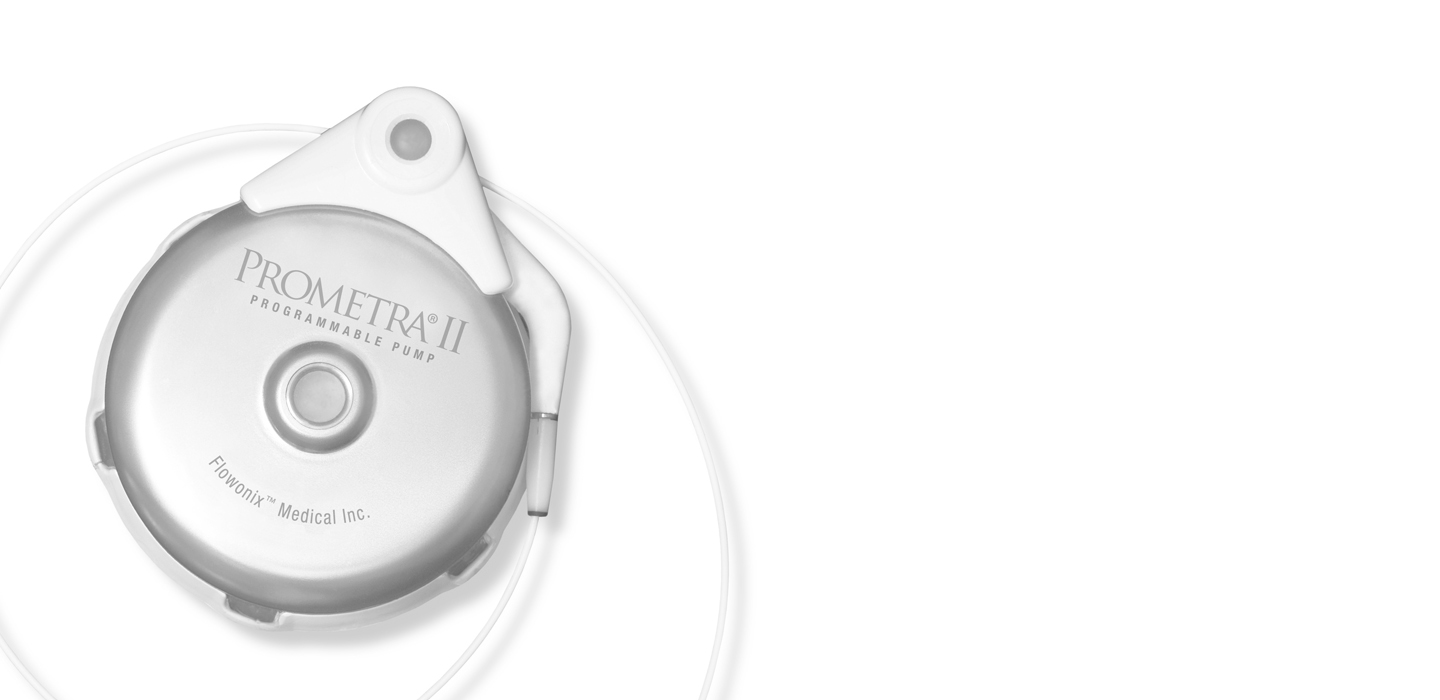The Prometra® System will be implanted during a surgical procedure that usually lasts one to three hours and will take place at a hospital or surgical center.
You will be comfortably sedated and monitored by an anesthesiologist during the surgery. The physician will make an incision in the skin of your abdomen to place the pump. Then, a second incision will be made in your back to allow the catheter to be placed near the spinal cord. Then, the other end of the catheter will be threaded under your skin and connected to the pump in your abdomen, making the entire system internal and fully implanted. There are no components on the outside of the body. Once the system has been tested and checked, the incisions are closed and the surgery is completed.
As with any surgery, there may be risks including infection and spinal fluid leak. A so-called “spinal headache” is also possible. After the system is implanted, problems with the device may occur and require additional surgery. Improper functioning of the device can result in drug overdose or underdose that may have serious or life-threatening adverse effects. Possible complications with the device can include the catheter or pump moving within the body or wearing through the skin. The catheter could leak, tear, kink or become disconnected. The pump could stop if the battery runs out or because some other element of the system has failed. Additionally, inflammatory masses have been reported at the tip of the catheter, which may lead to complications.

